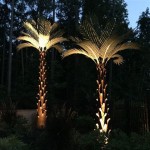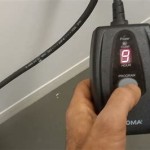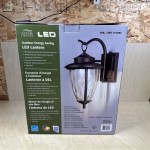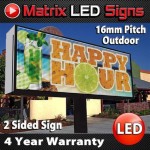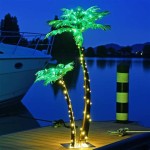Commercial Solar Powered Flood Lights for Outdoor Applications
Commercial solar-powered floodlights represent a significant advancement in outdoor lighting technology. These lights harness the power of the sun to provide illumination, offering a cost-effective and environmentally responsible alternative to traditional grid-tied lighting systems. Their application spans a wide range of commercial settings, from parking lots and construction sites to security perimeters and recreational areas.
The core principle underlying solar floodlights is simple: photovoltaic (PV) cells convert sunlight into direct current (DC) electricity. This electricity is then stored in a battery during daylight hours and subsequently used to power light-emitting diodes (LEDs) at night. This self-contained system eliminates the need for complex wiring and reliance on the electrical grid, resulting in reduced energy consumption and lower operational costs.
The selection of commercial-grade solar floodlights necessitates careful consideration of several factors, including the intended application, the required light output, the geographical location, and the desired operational lifespan. Compromising on quality can result in premature failure and insufficient lighting, ultimately negating the benefits of solar power. Understanding the key components and their functionalities is essential for making informed decisions.
Key Components of Commercial Solar Flood Lights
A typical commercial solar floodlight system comprises several integral components working synergistically to provide reliable illumination. These include the solar panel, the battery, the LED light fixture, the charge controller, and the mounting hardware. The performance and durability of each component directly impact the overall effectiveness of the system.
Solar Panel: The solar panel is the primary energy-harvesting component. Commercial-grade solar floodlights generally utilize monocrystalline or polycrystalline silicon solar panels. Monocrystalline panels are known for their higher efficiency and sleeker appearance, while polycrystalline panels offer a more cost-effective solution. The size and wattage of the solar panel must be appropriately matched to the energy demands of the LED light and the average daily sunlight hours in the installation location. Insufficient panel size can lead to inadequate battery charging and reduced lighting duration.
Battery: The battery serves as the energy storage unit, accumulating solar energy during the day and discharging it to power the LED light at night. Lithium-ion batteries are commonly employed in commercial solar floodlights due to their high energy density, long lifespan, and ability to withstand deep discharge cycles. Lead-acid batteries, while less expensive, are heavier, have a shorter lifespan, and are more susceptible to performance degradation with repeated deep discharges. The battery's capacity (measured in amp-hours, Ah) must be sufficient to provide the desired lighting duration, even during periods of prolonged cloudy weather.
LED Light Fixture: Light-Emitting Diodes (LEDs) are the light source of choice for solar floodlights due to their high efficiency, long lifespan, and durability. LEDs consume significantly less energy than traditional incandescent or halogen bulbs, translating to longer operating times on a single charge. The light output of the LED fixture is measured in lumens. The required lumen output depends on the specific application and the desired level of illumination. Color temperature, measured on the Kelvin (K) scale, also impacts the perceived brightness and atmosphere of the lighting. Warmer color temperatures (e.g., 3000K) provide a softer, more inviting light, while cooler color temperatures (e.g., 6000K) offer a brighter, more functional light.
Charge Controller: The charge controller is a critical component that regulates the flow of electricity between the solar panel, the battery, and the LED light. It prevents overcharging and over-discharging of the battery, thereby extending its lifespan. Modern charge controllers often incorporate Maximum Power Point Tracking (MPPT) technology, which optimizes the energy transfer from the solar panel to the battery, maximizing efficiency. The charge controller also manages the operation of the LED light, turning it on and off automatically based on ambient light levels or a pre-programmed schedule.
Mounting Hardware: The mounting hardware provides the physical support for the solar panel and the LED light fixture. It must be robust enough to withstand wind loads, snow loads, and other environmental stresses. The mounting hardware should also allow for adjustable positioning of the solar panel to maximize sunlight exposure. Common mounting options include pole mounts, wall mounts, and ground mounts.
Benefits of Utilizing Commercial Solar Flood Lights
The adoption of commercial solar floodlights offers a multitude of benefits, making them an increasingly attractive lighting solution for various applications. These benefits extend beyond mere cost savings and encompass environmental sustainability, operational efficiency, and enhanced safety.
Reduced Energy Costs: The most prominent advantage of solar floodlights is the elimination of electricity bills. As the lights are powered by solar energy, there are no ongoing energy costs associated with their operation. This can result in significant long-term savings, particularly for large-scale installations. While there is an initial investment in the solar floodlight system, the return on investment (ROI) is typically realized within a few years, depending on the energy consumption of the equivalent grid-tied lighting system.
Environmental Sustainability: Solar floodlights are an environmentally friendly lighting solution. They reduce reliance on fossil fuels, minimizing carbon emissions and contributing to a cleaner environment. By harnessing renewable energy, solar floodlights help to mitigate the effects of climate change and promote a more sustainable future. The use of solar power also reduces the demand on the electrical grid, lessening the strain on existing power infrastructure.
Easy Installation and Maintenance: Solar floodlights are relatively easy to install compared to traditional grid-tied lighting systems. There is no need for trenching, wiring, or electrical connections, simplifying the installation process and reducing labor costs. Solar floodlights also require minimal maintenance. The LED light fixtures have a long lifespan, typically lasting for several years. The batteries may need to be replaced periodically, but the overall maintenance requirements are significantly lower than those of conventional lighting systems.
Enhanced Security and Safety: Solar floodlights can enhance security and safety in commercial settings. Bright, reliable lighting deters criminal activity and improves visibility for employees and visitors. Solar floodlights can be installed in remote locations where grid power is unavailable, providing lighting in areas that would otherwise be unlit. This is particularly beneficial for security perimeters, parking lots, and construction sites.
Independent Operation and Reliability: Because they are not connected to the electrical grid, solar floodlights are independent of power outages. This ensures continuous lighting, even during storms or other events that disrupt the power grid. This reliability is crucial for security applications and for maintaining a safe environment in critical areas.
Factors to Consider When Selecting Commercial Solar Flood Lights
Choosing the right commercial solar floodlight requires careful consideration of several key factors. Failing to adequately assess these factors can lead to suboptimal performance and dissatisfaction. A thorough evaluation of the application, environmental conditions, and performance requirements is crucial for selecting the most appropriate solar floodlight system.
Lighting Requirements: The first step in selecting a solar floodlight is to determine the specific lighting requirements of the application. This includes the desired light output (lumens), the area to be illuminated, and the required lighting duration. Consider the ambient light levels in the area and the specific tasks that will be performed under the lighting. For example, a parking lot will require a different light output than a security perimeter. Calculate the required lumen output based on the size of the area and the desired level of illumination. The lighting duration should be determined based on the typical hours of darkness and the need for continuous lighting.
Geographical Location and Sunlight Availability: The geographical location plays a significant role in the performance of solar floodlights. Areas with high solar irradiance (i.e., abundant sunlight) will generate more energy than areas with low solar irradiance. The angle of the sun also varies depending on the latitude and the time of year. Ensure the solar panel is positioned to maximize sunlight exposure throughout the year. Consult solar irradiance maps and historical weather data to determine the average daily sunlight hours in the installation location. This information is crucial for sizing the solar panel and battery system appropriately.
Battery Capacity and Lifespan: The battery capacity is a critical factor in determining the lighting duration and the system's ability to withstand periods of cloudy weather. A larger battery capacity will provide longer lighting duration and greater resilience to weather variations. The battery lifespan is also an important consideration, as the battery will eventually need to be replaced. Lithium-ion batteries generally have a longer lifespan than lead-acid batteries. Choose a battery with a capacity that is adequate for the desired lighting duration, taking into account the average daily sunlight hours and the potential for cloudy weather. Consider the battery's discharge rate and depth of discharge (DoD) to ensure it will provide reliable performance over its lifespan.
Durability and Weather Resistance: Commercial solar floodlights are typically installed outdoors and are exposed to various weather conditions, including rain, snow, wind, and extreme temperatures. Ensure the floodlight is made from durable materials and is designed to withstand these conditions. Look for a product with a high Ingress Protection (IP) rating, which indicates the level of protection against dust and water ingress. A higher IP rating signifies greater protection. Consider the operating temperature range of the floodlight and ensure it is suitable for the climate in the installation location.
Warranty and Support: A comprehensive warranty provides protection against defects and ensures the manufacturer will provide support if any issues arise. Carefully review the warranty terms and conditions before making a purchase. Consider the manufacturer's reputation and their track record of providing reliable products and customer support. Choose a reputable manufacturer with a proven history of producing high-quality solar floodlights and providing excellent customer service.
By carefully considering these factors, businesses can select commercial solar floodlights that meet their specific needs and provide reliable, cost-effective, and environmentally responsible outdoor lighting.

Commercial Led Solar Security Lighting Projects Overview

Commercial Solar Street Flood Light Led Lamp Outdoor Area Dusk To Dawn Wall

600w Solar Street Light Outdoor 60000lm Parking Lot Commercial 6500k Dusk To Dawn Led Powered Security Flood With Motion Sensor For Basketball Court Road Com

Solar Street Lights Gefolly

Commercial Solar Street Flood Light Led Lamp Outdoor Area Dusk To Dawn Wall

Powerful 30w Solar Flood Light Commercial Grade Outdoor Cob Led

Pacearth Solar Street Lights Outdoor 1200w Security Light Motion Sensor Commercial Parking Lot Powered Led Waterproof Dusk To Dawn Flood Shein Usa

China Commercial Solar Led Flood Lights Outdoor 100w 500w For Park Powered Security Waterproof Garden Light Made In Com

New Solar Street Lights 2500w Led Powered Light Commercial Outdoor Dusk To Dawn With Remote Control Ip67 Waterproof Super Bright Flood Com

Teekuv 1200w Solar Street Lights Outdoor 135000lm Commercial Parking Lot Light 6000k Dusk To Dawn Led Security Flood With Motion Sensor For Outside 2 Pack Yahoo Ping
Related Posts

